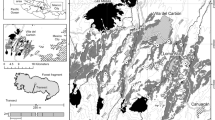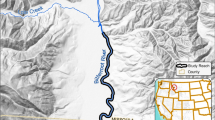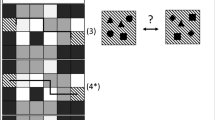Abstract
Understanding how plant–animal interactions shape plant regeneration is traditionally examined at local scales. In contrast, landscape ecologists working at regional scales often have to infer the mechanisms underlying vegetation patterns. In this study, we empirically explored how landscape attributes (patch connectivity, size, shape, irradiance, slope, and elevation) influence biotic interactions in 1- and 2-year seedlings and saplings of Quercus ilex. We combined field data and GIS-based information under a set of five connectivity scenarios, presuming low, intermediate, and long-distance seed dispersal. Our study emphasizes that landscape, apart from its direct effects on plants, plays a key, albeit indirect, role in plant demography through its effects on seed dispersers and predators. Moreover, the effects of landscape on recruitment differed between plant life stages. One-year seedlings and saplings appear to depend more on plant–animal interactions, while 2-year seedlings depend more on irradiance. Differences in patch connectivity resulted in direct and indirect effects on biotic interactions, which, in turn, produced contrasting positive and negative effects on regeneration at different stages of the life cycle. While jays and wild boars seem crucial to all life stages and most of the connectivity scenarios, rodents and herbivores affected only 1-year seedlings and saplings, respectively, and only a few of the connectivity scenarios. By simultaneously including an ensemble of explanatory factors, our study emphasizes that regeneration depends on a set of key drivers, both abiotic (i.e. irradiance) and biotic (i.e. jays and wild boars), whose effects are greatly modulated by landscape traits.




Similar content being viewed by others
References
Abrahamson WG, Layne JN (2002) Post-fire recovery of acorn production by four oak species in southern ridge sandhill association in south-central Florida. Am J Bot 89:119–123
Aerts R, Thijs KW, Lehouck V, Beentje H, Bytebier B, Matthysen E, Gulinck H, Lens L, Muys B (2011) Woody plant communities of isolated Afromontane cloud forests in Taita Hills, Kenya. Plant Ecol 212:639–649
Balcomb SR, Chapman CA (2003) Bridging the gap: influence of seed deposition on seedling recruitment in a primate-tree interaction. Ecol Monogr 73:525–642
Bollen KA (1989) Structural equations with latent variables. Wiley, New York
Burnham KP, Anderson DR (2002) Model selection and multimodel inference: a practical information-theoretic approach. Springer, Berlin
Damschen EI, Brudvig L, Haddad NM, Levey DJ, Orrock JL, Tewksbury JJ (2008) The movement ecology and dynamics of plant communities in fragmented landscapes. Proc Natl Acad Sci USA 105:19078–19083
Espelta JM, Riba M, Retana J (1995) Patterns of seedling recruitment in west Mediterranean coppiced holm-oak (Quercus ilex L.) forests as influenced by canopy development. J Veg Sci 6:465–472
Freckleton RP, Watkinson AR (2002) Large-scale spatial dynamics of plants: metapopulations, regional ensembles and patchy populations. J Ecol 90:419–434
Gómez JM (2003) Spatial patterns in long-distance dispersal of Quercus ilex acorns by jays in a heterogeneous landscape. Ecography 26:573–584
Gómez JM (2004) Importance of microhabitat and acorn burial on Quercus ilex early recruitment: non-additive effects on multiple demographic processes. Plant Ecol 192:287–297
Gómez JM, Hódar JA (2008) Wild boars (Sus scrofa) affect the recruitment rate and spatial distribution of holm oak (Quercus ilex). For Ecol Manag 256:1384–1389
Gómez JM, Valladares F, Puerta-Piñero C (2004) Differences between structural and functional environmental heterogeneity caused by seed dispersal. Funct Ecol 18:787–792
Gómez JM, Puerta-Piñero C, Schupp EW (2008) Effectiveness of rodents as local seed dispersers of Holm oaks. Oecologia 155:529–537
Goodwin B, Fahrig L (2002) How does landscape structure influence landscape connectivity? Oikos 99:552–570
Grace JB (2006) Structural equation modeling and natural systems. Cambridge University Press, Cambridge
Gracia M, Retana J, Picó FX (2001) Seedling bank dynamics in managed holm oak (Quercus ilex) forests. Ann For Sci 58:843–852
Hanski I (1999) Metapopulation ecology. Oxford University Press, Oxford
Harrison S, Bruna E (1999) Habitat fragmentation and large-scale conservation: what do we know for sure? Ecography 22:225–232
Herrera J, Garcia D (2010) Effects of forest fragmentation on seed dispersal and seedling establishment in ornithochorous trees. Conserv Biol 24:1089–1098
Herrera C, Jordano P, Lopez-Soria L, Amat JA (1994) Recruitment of a mast-fruiting, bird-dispersed tree: bridging frugivore activity and seedling establishment. Ecol Monogr 64:315–344
Herrera J, Garcia D, Morales J (2011) Matrix effects on plant-frugivore and plant–predator interactions in forest fragments. Landsc Ecol 26:125–135
Jacquemyn H, Butaye J, Hermy M (2003) Influence of environmental and spatial variables on regional distribution of forest plant species in a fragmented and changing landscape. Ecography 26:768–776
Jordano P, García C, Godoy JA, García-Castaño JL (2007) Differential contribution of frugivores to complex seed dispersal patterns. Proc Natl Acad Sci USA 104:3278–3282
Kolb A, Diekmann M (2004) Effects of environment, habitat configuration and forest continuity on the distribution of forest plant species. J Veg Sci 15:199–208
Kolb A, Diekmann M (2005) Effects of life-history traits on responses of plant species to forest fragmentation. Conserv Biol 19:929–938
Kolb A, Leimu R, Ehrlen J (2007) Environmental context influences the outcome of a plant-seed predator interaction. Oikos 116:864–872
Kollmann J, Schill H (1996) Spatial patterns of dispersal, seed predation and germination during colonization of abandoned grassland by Quercus petraea and Corylus avellana. Plant Ecol 125:193–205
Lehouck V, Spanhove T, Vangestel C, Cordeiro NJ, Lens L (2009a) Does landscape structure affect resource tracking by avian frugivores in a fragmented Afrotropical forest? Ecography 32:789–799
Lehouck V, Spanhove T, Colson L, Adringa-Davis A, Cordeiro NJ, Lens L (2009b) Habitat disturbance reduces seed dispersal of a forest interior tree in a fragmented African cloud forest. Oikos 118:1023–1034
Lehouck V, Spanhove T, Gonsamo A, Cordeiro N, Lens L (2009c) Spatial and temporal effects on recruitment of an Afromontane forest tree in a threatened fragmented ecosystem. Biol Conserv 142:518–528
Lindenmayer D, Fischer J (2006) Habitat fragmentation and landscape change: an ecological and conservation synthesis. Island Press, USA
Michalak J (2011) Effects of Habitat and Landscape Structure on Oregon White Oak (Quercus garryana) Regeneration Across an Urban Gradient. Northwest Sci 85:182–193
Muñoz A, Bonal R (2007) Rodents change acorn dispersal behaviour in response to ungulate presence. Oikos 116:1631–1638
Muñoz A, Bonal R, Díaz M (2009) Ungulates, rodents, shrubs: interactions in a diverse Mediterranean ecosystem. Basic Appl Ecol 10:151–160
Nathan R, Muller-Landau H (2000) Spatial patterns of seed dispersal, their determinants and consequences for recruitment. Trends Ecol Evol 15:278–285
Nathan R, Schurr FM, Spiegel O, Steinitz O, Trakhtenbrot A, Tsoar A (2008) Mechanisms of long-distance seed dispersal. Trends Ecol Evol 23:638–646
Pons J, Pausas JG (2006) Oak regeneration in heterogeneous landscapes: the case of fragmented Quercus suber forests in the eastern Iberian Peninsula. For Ecol Manag 231:196–204
Puerta-Piñero C (2010) Intermediate spatial variations on acorn predation shapes Holm oak establishment within a Mediterranean landscape context. Plant Ecol 210:213–224
Puerta-Piñero C, Gómez JM, Valladares F (2007) Irradiance and oak seedling survival and growth in a heterogeneous environment. For Ecol Manag 242:462–469
Pugesek BH, Tomer A, Von Eye A (2003) Structural equation modeling, applications in ecological and evolutionary biology. Cambridge University Press, Cambridge
Ramírez J, Rey PJ, Alcantara JM, Sánchez-Lafuente A (2006) Altitude and woody cover control recruitment of Helleborus foetidus in a Mediterranean mountain area. Ecography 29:375–384
Rey P, Alcántara JM (2000) Recruitment dynamics of a fleshy-fruited plant (Olea europaea): connecting patterns of seed dispersal to seedling establishment. J Ecol 88:622–633
Schupp EW (1995) Seed-seedling conflicts, habitat choice, and patterns of plant recruitment. Am J Bot 82:399–409
Shipley B (2000) Cause and correlation in biology. Cambridge University Press, Cambridge
StatSoft (2005) STATISTICA (data analysis software system), version 7.1. StatSoft, Tulsa
Steele M, Carlson JE, Smallwood PD, McEuen AB, Contreras TA, Terzaghi WB (2007) Linking seed and seedling shadows: a case study in the oaks (Quercus). In: Dennis AJ, Green R, Schupp E, Westcott DA (eds) Seed dispersal: theory and its applications in a changing world. CAB International, Wallingford
Thomson DM (2007) Do source-sink dynamics promote the spread of an invasive grass into a novel habitat? Ecology 88:3126–3134
Turner MG (2005) Landscape ecology: what is the state of the Science? Annu Rev Ecol Evol Syst 36:319–344
Vellend M (2003) Habitat loss inhibits recovery of plant diversity as forests regrow. Ecology 84:1158–1164
Verheyen K, Vellend M, van Calster H, Peterken GF, Hermy M (2004) Metapopulation dynamics in changing landscapes: a new spatially realistic model for forest plants. Ecology 85:3302–3312
Virgós E (2002) Factors affecting wild boar (Sus scrofa) occurrence in highly fragmented Mediterranean landscapes. Can J Zool 80:430–435
Wagenmakers EJ, Farrell S (2004) AIC model selection using Akaike weights. Psychon Bull Rev 11:192–196
Wiens JA (1976) Population responses to patchy environments. Annu Rev Ecol Syst 7:81–120
Wiens J, Stenseth NC, Van Horne B, Ims R (1993) Ecological mechanisms and landscape ecology. Oikos 66:369–380
Zamora R, Gómez JM, Hódar JÁ, Castro J, García D (2001) Effect of browsing by ungulates on sapling growth of Scots pine in a Mediterranean environment: consequences for forest regeneration. For Ecol Manag 144:33–42
Acknowledgments
We thank Fernando Valladares for his help in taking and computing the hemispherical photographs, Miguel Calero for helping in the field, and Lluís Pesquer and Xavier Pons for technical assistance during the GIS procedure. Max Segnitz and Ryan Chisholm kindly revised English language and grammar. Johannes Kollmann, Pedro Rey, Valerie Lehouck, and several anonymous reviewers greatly improved preliminary versions of this manuscript. This study was possible thanks to a FPU fellowship AP2003-344 and grants REN2003-07048, CSD2008-00040, and Fundación Caja Madrid. The field and GIS sampling performed in this study comply with the current Spanish laws.
Author information
Authors and Affiliations
Corresponding author
Additional information
Communicated by Meelis Partel.
Electronic supplementary material
Below is the link to the electronic supplementary material.
Rights and permissions
About this article
Cite this article
Puerta-Piñero, C., Pino, J. & Gómez, J.M. Direct and indirect landscape effects on Quercus ilex regeneration in heterogeneous environments. Oecologia 170, 1009–1020 (2012). https://doi.org/10.1007/s00442-012-2373-1
Received:
Accepted:
Published:
Issue Date:
DOI: https://doi.org/10.1007/s00442-012-2373-1




